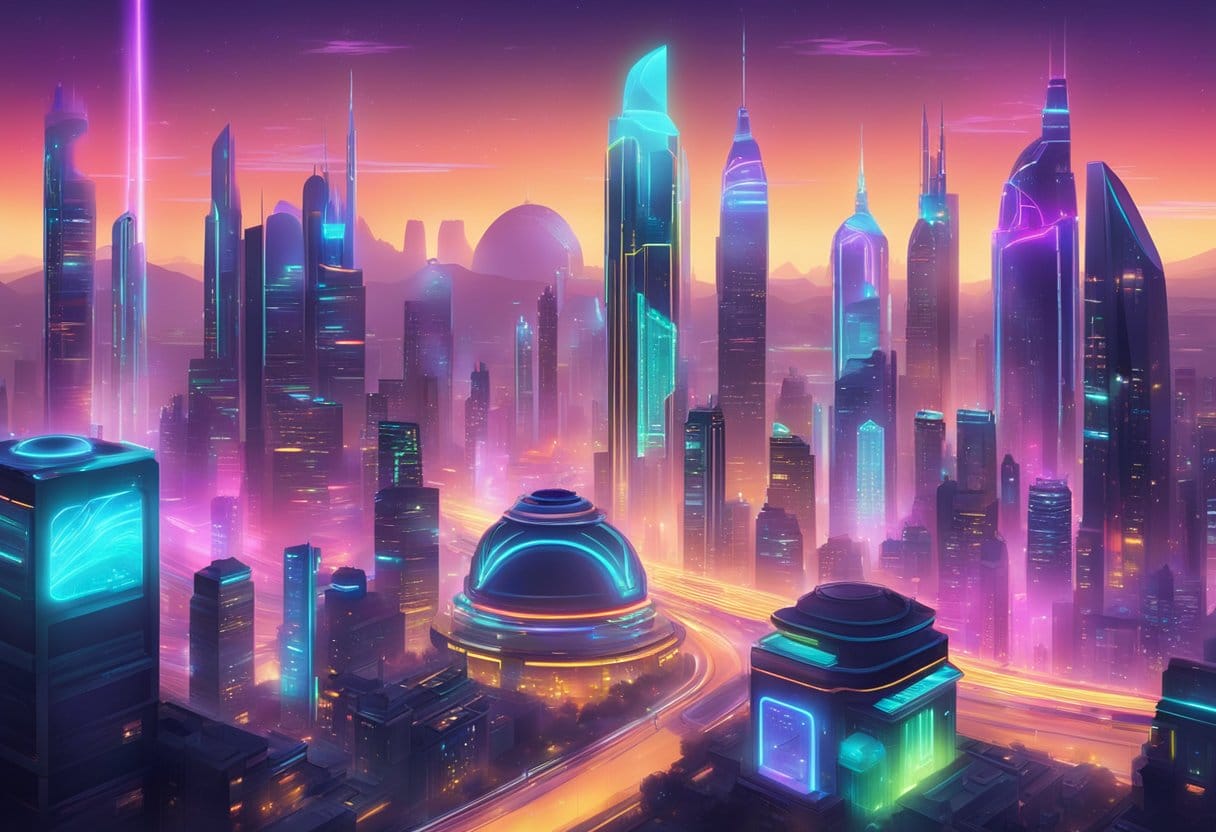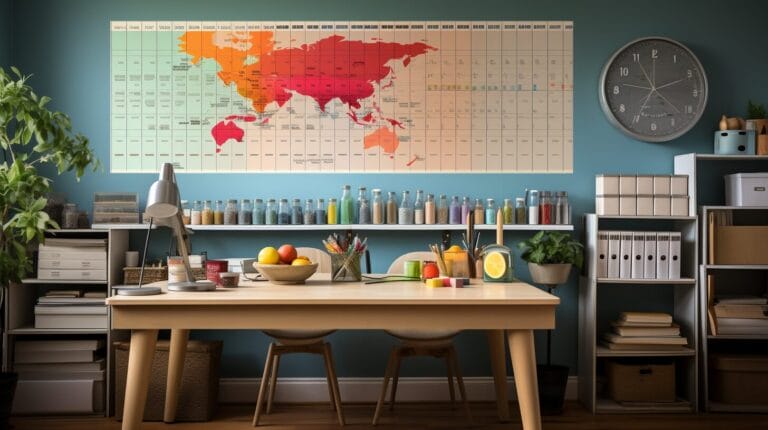How to Create VFX Effects: Expert Techniques Simplified

The role of Visual Effects (VFX) in the entertainment industry is tremendously significant. Its impact can be seen in areas such as cinema, video games, and advertisements. VFX is integral to the creation and modification of digital images, which are used to enhance real-life footage obtained with video cameras. Obtaining skills in VFX not only broadens your skillset but also provides a pathway to numerous career opportunities in our technologically advanced society.
To be adept at VFX, understanding the basics is crucial, as is familiarizing yourself with popular VFX software. Building your first VFX can seem daunting. However, equipped with the right tools and guided assistance, you can bring creative visions to reality. Advanced VFX techniques can take your projects up a notch, leading to more realistic, dynamic, and complex visual experiences.
Key Takeaways:
- VFX enhances real-world footage with digital elements, widely used in the entertainment industry.
- Getting to grips with popular VFX tools and software is fundamental to becoming an expert.
- As your skills develop, advanced VFX techniques can elevate your projects, bringing your visions to life.
Understanding Visual Effects (VFX)
Visual Effects (VFX) is a compelling technique employed in the film, television, and game industries. These techniques enable the creation of impressive, immersive scenes and images that standard filming methods can’t achieve. VFX integrates computer-generated imagery with live-action footage, allowing artists and filmmakers to stretch the boundaries of reality.
The realm of VFX has grown significantly over the years with many big-budget productions utilizing this technology to offer breathtaking cinematic experiences. For instance, filmmakers can add special effects like explosions, fire, water, or even entire digital worlds and characters using VFX, making it an invaluable tool for contemporary storytelling.
To produce top-notch VFX, artists use various techniques and software tools. Key VFX techniques include compositing, motion capture, 3D modeling, and matte paintings. Compositing combines different visual elements from diverse sources to create a single seamless image. In contrast, motion capture records live actors’ movements, which are then transferred to digital characters, enhancing realism.
The quality of a visual effects output primarily depends on the talents and capabilities of the artists and available resources. Professionals continuously update and tweak their techniques to keep abreast with technological advances and the burgeoning demand for more sophisticated visuals. This continuous evolution has resulted in greater realism, detail, and intricacy in VFX, as we see today.
Popular VFX Tools and Software
Visual effects are critical components in the filmmaking industry, advertising, and video production. Numerous tools and software options are available to create exceptional VFX that cater to both beginners and professionals. This section will discuss some of the most popular VFX software: Adobe After Effects, DaVinci Resolve, Cinema 4D, and 3DS Max.
Adobe After Effects
Adobe After Effects is a widely-used VFX software that allows users to create anything from simple animations to high-end visual effects. With its user-friendly interface and extensive library of built-in effects and plugins, it’s popular among beginners. Some of its key features include 3D camera support, a robust text, and shape animation engine, and integration with other Adobe creative tools.
DaVinci Resolve
DaVinci Resolve is a premier video editing and color grading software used by professionals in the movie and television industry. Apart from its advanced color correction capabilities, DaVinci Resolve has a comprehensive set of VFX and compositing tools. Its Fusion page allows users to build complex, node-based effects, such as particle systems and 3D scenes. The software also offers a free version, which is appealing for budget-conscious users.
Cinema 4D
Cinema 4D is a 3D modeling, rendering, and animation software renowned for its ease of use and powerful capabilities. It’s widely adopted by professionals in the motion graphics and VFX industries to create high-quality 3D animations and visual effects. Key features include a robust set of 3D modeling tools and an efficient rendering engine. It integrates seamlessly with Adobe After Effects, providing a streamlined workflow for VFX production.
3DS Max
3DS Max is an industry-leading 3D modeling and animation software with a comprehensive set of tools for creating intricate 3D models and photorealistic renderings. This software is particularly popular in the fields of architectural visualization, game development, and VFX production due to its advanced capabilities and extensive plugin ecosystem. Notable features include potent 3D modeling tools, a sophisticated particle system, and advanced rigging capabilities.
Creating Your First VFX Effect
VFX are digital manipulations that improve the visual quality of a video or film. This section walks you through a simple workflow on creating your first VFX effect.
Importing Video Footage
Start by importing your chosen video footage into the editing software of your choice. Be sure that the footage is in a compatible format and resolution. If needed, make adjustments to the clip, such as trimming and cropping before proceeding.
Adding Effects
After getting the video footage on your timeline, it’s time to introduce VFX. You can do this by dragging and dropping effects, like lens flare or motion blur, from the effects library onto the timeline. Adjust the intensity and duration of the effects to align with your vision.
Setting Up Green Screen
For more complex VFX, you might need to use a green screen. To properly set it up, ensure it is evenly lit and lacks wrinkles or shadows. Import the green screen footage into your editing software and apply the chroma key effect. This process removes the green background and renders it transparent.
Color Correcting and Grading
After introducing the VFX into your video footage, make adjustments to the color correction and grading to ensure your effects blend seamlessly with your footage. Color correction involves tweaking brightness, contrast, and saturation to create a consistent look. Color grading, on the other hand, involves imposing a unique color palette to enhance the scene’s mood.
Exporting Your Video
Once you have completed all the steps, you are ready to export your video. Choose the correct file format and resolution for the final output. Ensure the exported video retains its quality by checking for compression artifacts and make necessary adjustments.
By following this workflow, you will be on your way to creating impressive VFX effects for your videos that enliven your storytelling and materialized your creative vision.
Advanced VFX Techniques
In this section, we will delve into advanced VFX methods. These techniques can enrich your existing VFX skills, lifting your projects to a professional level. The following sub-sections provide an in-depth look at various approaches employed by professionals to create stunning motion graphics and realistic effects.
Motion Tracking
Motion tracking is a critical technique for seamlessly integrating VFX with live-action footage. It computes the movement of objects or the camera within a video and translates that data into your 3D software. This algorithm lets you attach 3D models and effects to specific points in your footage, creating the illusion that these digital elements belong in the video scene.
Matte Painting
Matte painting is a technique that combines traditional and digital painting to create realistic, large-scale environments that otherwise would be too costly or difficult to physically construct. These paintings are often used for set extensions, adding depth and detail to scenes. You can start learning matte painting by honing your painting skills and studying the work of esteemed matte painters.
Set Extensions
Set extensions involve augmenting or altering the live-action environment with digital elements, such as heightening a building or adding a cityscape to the background. This technique commonly uses a combination of matte painting and 3D models. To master set extensions, you must understand how to realistically integrate digital elements with the live-action footage.
3D Animations
3D animations are a staple in advanced VFX, allowing artists to create realistic characters, objects, and environments. This technique requires creating 3D models, rigging, animation, and rendering in 3D software. If you aspire to master 3D animation, consider honing your skills in modeling, texturing, and lighting, alongside familiarizing yourself with the principles of animation.
Key 3D Animation Principles
| Key 3D Animation Principles | Description |
| – | – |
| Timing | The speed at which actions occur |
| Ease in/out | The acceleration and deceleration of objects |
| Arcs | The curved paths of motion |
| Overlap & Follow-through | The delay and dragging of secondary actions |
Liquid and Particle Effects
These effects are used to create realistic simulations, such as water, fire, smoke, and explosions. Typically, they require specialized software or tools like Unity’s VFX Graph or Houdini’s particle system. To become proficient in creating these effects, learn the underlying physics, familiarize yourself with simulation tools, and experiment with different settings and forces.
VFX in Video Games
Computer-Generated Imagery
Computer-generated imagery (CGI) has become increasingly essential in video game development, providing visually captivating scenes and lifelike characters. Mastering VFX software allows game artists to design realistic game universes that are engaging and immersive, making VFX a pivotal facet of game production.
Consider, for instance, Unreal Engine, a favorite among game developers. It provides a robust platform for artists to collaborate on complex projects, allowing them to construct stunning game environments and fluid animations and dynamic visual effects like smoke, water, and fire.
Game VFX
When it comes to game VFX, its compatibility with 2D and 3D animation is paramount. By capitalizing on the potential of CGI, developers can offer truly immersive experiences for players.
While artistry in developing game VFX is important, game artists also need to understand the technical aspects of the various software and tools used in game production. For example, a comprehensive understanding of 3D animation tools like 3ds Max and Maya can greatly contribute to the overall design and success of VFX in games.
VFX in games aren’t merely for aesthetics; they play an integral role in establishing ambiance, setting the tone, telling its story, and emphasizing gameplay elements. In essence, integrating VFX into video games can create a gripping narrative that holds players’ interest and keeps them engaged in the game world.
Becoming a VFX Artist
Visual effects (VFX) artists carry the responsibility of creating stunning visuals for movies, television shows, video games, and other media forms. If telling stories through VFX piques your interest, becoming a VFX artist can be an exciting career path. This section provides strategies for learning VFX and developing a portfolio.
Learning VFX
The first step toward becoming a proficient VFX artist is acquiring a strong foundation in essential techniques and tools. Many budding VFX artists start their journey by exploring various software applications like Adobe After Effects, Nuke, and Houdini. These programs offer a wide range of capabilities for creating stunning visual effects.
Aside from software, it’s vital to learn fundamental concepts such as compositing, rotoscoping, 3D modeling, and animation. Several online learning platforms – Coursera, Udemy, and LinkedIn Learning – offer courses to help develop these skills. Hands-on practice is critical, so spend time working on personal projects and experimenting with different techniques.
Developing a Portfolio
Once you’ve accumulated some experience and skills, showcase your work by curating a powerful portfolio. The portfolio will allow potential employers to assess your abilities and discern your style as a VFX artist. Use the following guidelines to build an impressive portfolio:
- Choose Your Best Work: Include high-quality visual effects that demonstrate your creative talent, technical skills, and attention to detail. Quality over quantity always resonates better.
- Present Your Work Professionally: Arrange your portfolio to be easily navigable and understandable. Include clear descriptions for each project, outlining your role, the tools used, and any challenges you overcame.
- Display a Variety of Projects: Show your versatility as a VFX artist by presenting various types of projects. This variety can show potential employers your adaptability in your work.
- Update Your Portfolio Regularly: Keep your portfolio current. As you learn new skills and undertake more projects, make sure you consistently update your portfolio. This practice demonstrates your growth and dedication to keeping up to date with the rapidly changing VFX industry.
Following these guidelines sets you on track to becoming a successful VFX artist. Keep your passion alive and continue learning. Aim for excellence in all your projects.
VFX in Social Media and Marketing
VFX plays a significant role in creating eye-catching content for social media and online marketing campaigns. With online platforms and digital advertising booming, businesses are increasingly leveraging VFX to engage audiences and effectively promote their products or services.
One popular way to integrate VFX into social media is by creating cinemagraphs. Cinemagraphs introduce motion into a still image, resulting in a visually arresting effect. For example, marketers might add moving sky behind a static building or layer multiple VFX elements to create depth in an image.
Apart from cinemagraphs, marketers can create viral social media loops, which seamlessly loop for maximum impact. These loops can combine various elements – live-action footage, computer-generated imagery (CGI), and other visual effects – resulting in engaging and shareable content.
VFX also plays a valuable role in affiliate programs, where marketers and influencers collaborate to promote products or services. By incorporating unique and eye-catching VFX elements into promotional material, companies and influencers can increase their chances of audience engagement and boost conversion rates.
In conclusion, assimilating VFX into social media and marketing campaigns serves as a powerful tool for capturing audience attention and driving engagement. Businesses and content creators can exploit the potential of visual effects to enhance their digital presence and magnify the impact of their promotional efforts.
Future Trends in VFX

The VFX industry is continuously evolving, with cutting-edge technologies and innovative techniques shaping the future of visual effects. One significant trend we are seeing is the increased use of virtual humans in films and animations. As technology advances, we can expect even more realistic virtual characters who give life-like performances in the future 12 Predictions on the Future of VFX.
Large-scale productions are also pushing the VFX boundaries, as audiences demand more visually stunning and immersive experiences. Cloud computing, for example, is becoming essential for rendering complex large-scale scenes and accommodating the ever-increasing amount of data generated by VFX teams. Virtual production techniques are also on the rise. These techniques allow filmmakers to interact with digital environments in real-time which leads to more believable and engaging visuals.
Artificial intelligence (AI) and machine learning are playing a fundamental role in accelerating the VFX industry’s growth. These technologies streamline processes, improve efficiency, and boost creative potential by automating labor-intensive tasks and enabling distinctive effects. For instance, AI can analyze patterns and textures to produce realistic digital environments, and it can even simulate physical phenomena like fluids and smoke.
Another trend to watch is the accessibility of VFX software. Many companies offer trial versions of their top-quality VFX tools, enabling artists to experiment with new techniques and fine-tune their skills without significant financial investments. This accessibility promotes innovation and collaboration, allowing a broad array of diverse and unique visual effects to emerge.
To stay ahead of the curve, VFX artists and professionals should keep themselves updated about the latest trends and technologies in the industry, as they will directly impact their practice. By adopting the latest techniques and tools, visual effects will continue to evolve, offering captivating and immersive experiences to future audiences.
Conclusion
VFX have become an integral part of the filmmaking process. They enable creators to manifest their imagination and conjure striking scenes that would otherwise be impossible or cost-prohibitive to achieve through practical effects. To proficiently create VFX, understanding the variety of techniques and software used in this field is essential.
One crucial aspect of VFX creation is adopting an organized workflow. This includes naming conventions, folder structure, and asset management. Following a consistent and standardized approach can save time and minimize errors during production. Staying up-to-date on the latest tools, technologies, and trends in the VFX industry is essential in remaining competitive and ensuring the best possible output.
Collaboration between various departments, such as art direction, cinematography, and post-production, is also vital for creating seamless visual effects. Effective communication and understanding of each other’s needs can help identify potential challenges early on, leading to creative solutions that enrich the overall quality of the project.
In conclusion, creating successful VFX effects requires a blend of technical knowledge, artistic vision, and organized project management. Sticking to best practices and staying informed about the latest developments in the field allows filmmakers to create spectacular visual effects. These can enhance storytelling and elevate viewer experiences.
Frequently Asked Questions

What are the best VFX software options?
There are many VFX software options, each with its unique quirks and capabilities. Some top choices
include Autodesk’s Maya, Houdini, Nuke, Adobe After Effects, and Blender. The ideal software depends on your preferences, needs, and level of expertise.
Which VFX editing apps are beginner-friendly?
For beginners wishing to learn VFX, there are several user-friendly options. Adobe After Effects is a popular choice due to its intuitive interface and extensive community support. Additionally, Blender is an open-source application with a vast array of tutorials, making it an appealing option for those on a budget.
What are some easy VFX ideas to start with?
For beginners, it’s best to start with simple VFX ideas such as creating basic animations, removing unwanted objects, composing video layers, and adding simple effects like smoke, fire, or light flares. These projects will introduce you to fundamental VFX techniques and principles before progressing to more complex projects.
Where can I find free VFX tutorials for beginners?
There is an abundance of online resources for learning VFX without a cost. Websites such as Video Copilot, Film Riot, and the YouTube channels of VFX professionals offer comprehensive, beginner-friendly tutorials. Additionally, many software websites provide free tutorials and documentation to assist with learning their specific tools.
How can I create VFX using Blender?
Blender provides a comprehensive suite of tools for creating impressive VFX. Start by familiarizing yourself with its interface and primary features. Once comfortable, delve into its functionalities like particle systems, smoke and fire simulations, and composition options. With its powerful 3D modeling and animation capabilities, Blender is instrumental in creating various VFX effects. To enhance your knowledge and skills, consult online tutorials and forums specific to Blender.
What are some tips for creating VFX in After Effects?
When creating VFX in Adobe After Effects, consider these tips:
- Use keyboard shortcuts to optimize your workflow and streamline your tasks.
- Maintain organized compositions by using bins, folders, and properly naming layers.
- Utilize built-in plugins and effects, such as masks, keying, and motion tracking, to create a broad range of visual effects.
- Optimize your render settings to balance quality and efficiency, depending upon your project’s requirements.
- Always seek to update your knowledge and skills through the use of tutorials, forums, and other online resources.
By following these tips and best practices, even beginners can create high-quality VFX.






